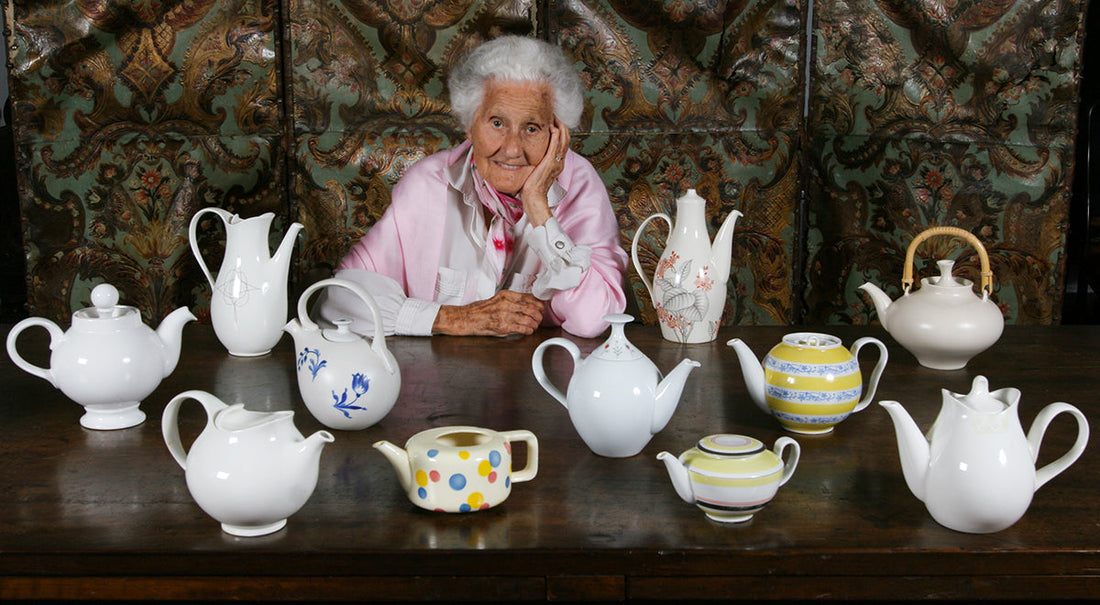
Design Takeaways: Eva Zeisel
Share

Few figures in 20th-century design embody the union of art, functionality, and human warmth quite like Eva Zeisel. Her career spanned a century and crossed continents, ideologies, and political upheaval. Her work offers industrial designers not only aesthetic inspiration but a blueprint for enduring and uncompromising human-centered design. With a body of work that balances modernism with whimsy, and mass production with soul, Zeisel’s story serves as both a history lesson and a call to action for today's design professionals.

From Budapest to Modern America: A Global Perspective
Born Éva Amália Striker in Budapest in 1906, Zeisel’s journey was one of resilience and reinvention. She trained as a painter but quickly transitioned into ceramics, recognizing the power of functional forms to touch everyday life. Her early career led her through Germany and the Soviet Union. However, in 1936, she was unjustly imprisoned in Stalinist Russia under accusations of plotting against the government. After 16 months in prison, Zeisel was released and eventually immigrated to the United States. What emerged was a philosophy that valued the gentle, the organic, and the human-scaled over the harsh or aggressively mechanical.

Zeisel’s most iconic work came during her time in the United States, particularly her collaborations with manufacturers such as Castleton China, Hall China Company, and Red Wing Pottery. With soft curves, nested forms, and anthropomorphic relationships between objects, her pieces didn’t just serve, they conversed.
Her work consistently rejected the cold, hyper-rational ethos of some contemporaneous modernism. Instead, she described her practice as a “playful search for beauty.” This phrase alone is a critical reminder to designers: form and function must be married with delight.

My Key Takeaways
1. Zeisel believed deeply in the tactile nature of objects. The ergonomics of her pieces were not afterthoughts. Industrial designers today, in an era increasingly focused on screen-based interactions, must reengage with physical empathy and model making. The human hand remains the ultimate arbiter of usability.
2. While Zeisel worked at scale, she never sacrificed character for efficiency. Her work demonstrates that industrial design doesn't need to sacrifice personality. Even in high-volume production, attention to silhouette, proportion, and detail resulted in products that feel bespoke.
3. Zeisel's forms echo historical influences from Hungarian folk motifs to baroque architecture. However, they are refracted through a distinctly modern sensibility. This tension between past and present is where design becomes timeless. In an age of rapid trend cycling, grounding designs in cultural and historical continuity offers lasting relevance.
4. Her biography reminds us that design careers are rarely linear. Adaptability, curiosity, and a strong philosophical core can sustain a designer through political, economic, and personal upheaval. Zeisel’s ability to reinvent herself across countries, languages, and disciplines is as inspiring as the forms she left behind.
A Tradition Worth Continuing
Zeisel passed away in 2011 at the age of 105, designing new products until the end of her life. Her work is held in the permanent collections of major museums and continues to influence new generations. But it's her design philosophy of creating objects that are graceful, human, and joyful that I find to be her greatest legacy.
Industrial designers today operate in a fast-paced, digitally mediated world. Yet Zeisel's work reminds us of the enduring importance of creating objects that speak to the human spirit. As we develop the AI-driven tools and systems of tomorrow, we should strive not to lose her lesson that beauty, warmth, and playfulness are necessities.


